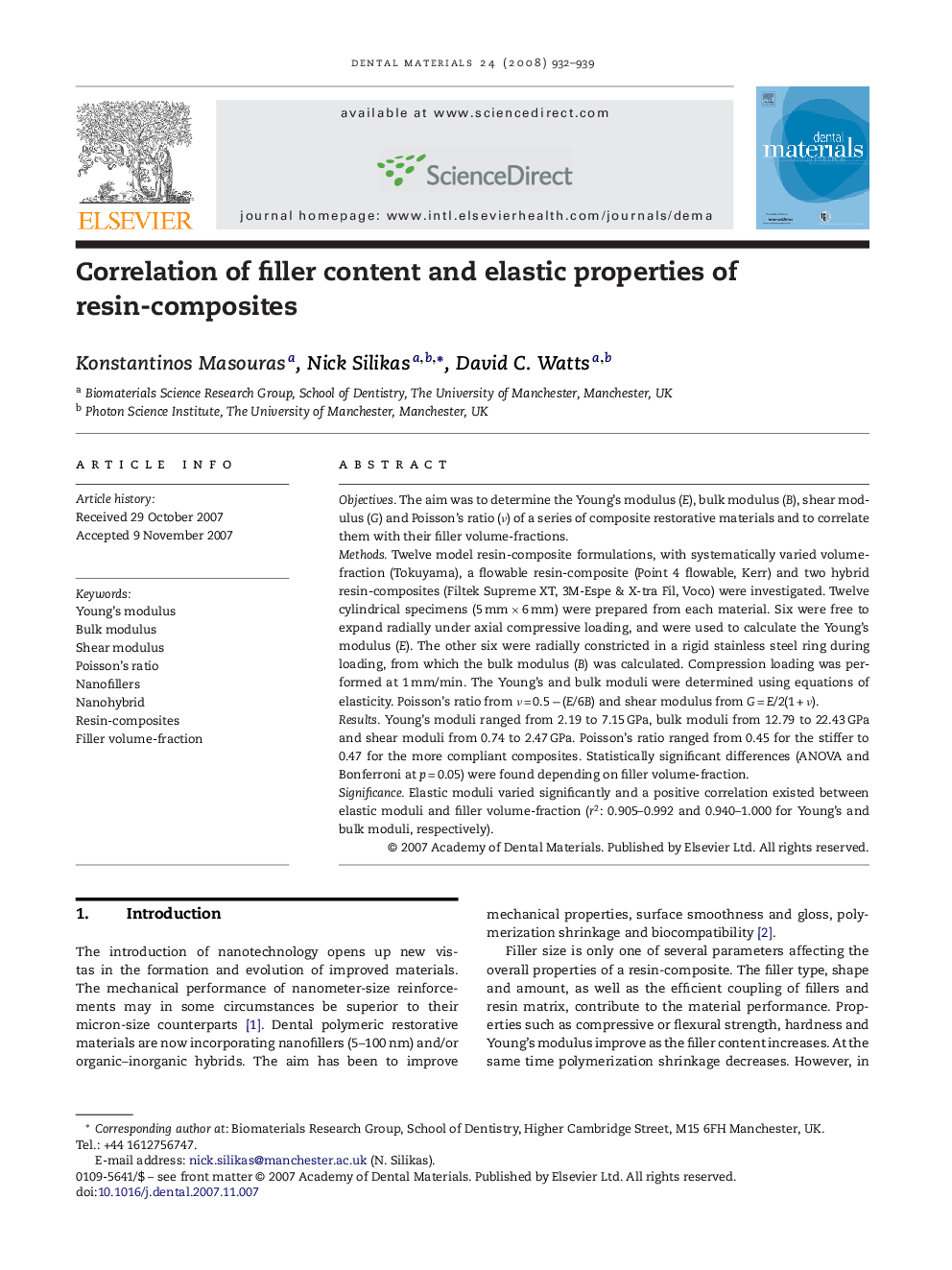| Article ID | Journal | Published Year | Pages | File Type |
|---|---|---|---|---|
| 1422988 | Dental Materials | 2008 | 8 Pages |
ObjectivesThe aim was to determine the Young's modulus (E), bulk modulus (B), shear modulus (G) and Poisson's ratio (ν) of a series of composite restorative materials and to correlate them with their filler volume-fractions.MethodsTwelve model resin-composite formulations, with systematically varied volume-fraction (Tokuyama), a flowable resin-composite (Point 4 flowable, Kerr) and two hybrid resin-composites (Filtek Supreme XT, 3M-Espe & X-tra Fil, Voco) were investigated. Twelve cylindrical specimens (5 mm × 6 mm) were prepared from each material. Six were free to expand radially under axial compressive loading, and were used to calculate the Young's modulus (E). The other six were radially constricted in a rigid stainless steel ring during loading, from which the bulk modulus (B) was calculated. Compression loading was performed at 1 mm/min. The Young's and bulk moduli were determined using equations of elasticity. Poisson's ratio from ν = 0.5 − (E/6B) and shear modulus from G = E/2(1 + ν).ResultsYoung's moduli ranged from 2.19 to 7.15 GPa, bulk moduli from 12.79 to 22.43 GPa and shear moduli from 0.74 to 2.47 GPa. Poisson's ratio ranged from 0.45 for the stiffer to 0.47 for the more compliant composites. Statistically significant differences (ANOVA and Bonferroni at p = 0.05) were found depending on filler volume-fraction.SignificanceElastic moduli varied significantly and a positive correlation existed between elastic moduli and filler volume-fraction (r2: 0.905–0.992 and 0.940–1.000 for Young's and bulk moduli, respectively).
